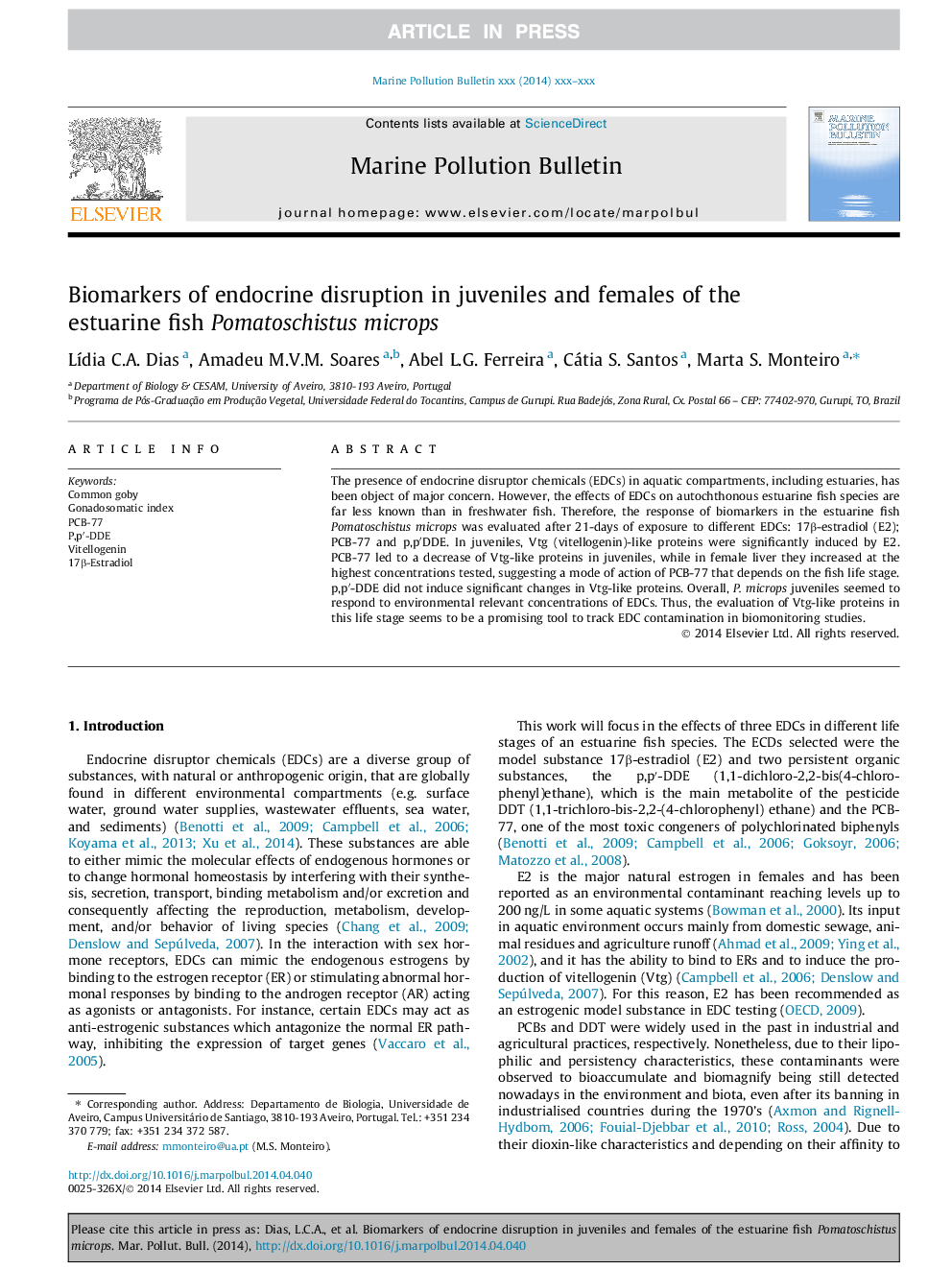| Article ID | Journal | Published Year | Pages | File Type |
|---|---|---|---|---|
| 6358701 | Marine Pollution Bulletin | 2014 | 8 Pages |
Abstract
The presence of endocrine disruptor chemicals (EDCs) in aquatic compartments, including estuaries, has been object of major concern. However, the effects of EDCs on autochthonous estuarine fish species are far less known than in freshwater fish. Therefore, the response of biomarkers in the estuarine fish Pomatoschistus microps was evaluated after 21-days of exposure to different EDCs: 17β-estradiol (E2); PCB-77 and p,pâ²DDE. In juveniles, Vtg (vitellogenin)-like proteins were significantly induced by E2. PCB-77 led to a decrease of Vtg-like proteins in juveniles, while in female liver they increased at the highest concentrations tested, suggesting a mode of action of PCB-77 that depends on the fish life stage. p,pâ²-DDE did not induce significant changes in Vtg-like proteins. Overall, P. microps juveniles seemed to respond to environmental relevant concentrations of EDCs. Thus, the evaluation of Vtg-like proteins in this life stage seems to be a promising tool to track EDC contamination in biomonitoring studies.
Related Topics
Physical Sciences and Engineering
Earth and Planetary Sciences
Oceanography
Authors
LÃdia C.A. Dias, Amadeu M.V.M. Soares, Abel L.G. Ferreira, Cátia S. Santos, Marta S. Monteiro,
